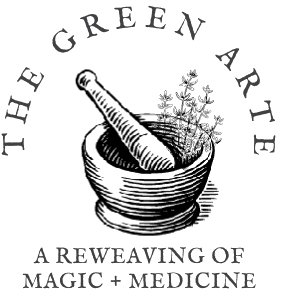Herb Walk in Salt Lake City | Identify Medicinal & Edible Plants
I'm excited to announce the first official herb walk of 2024!
In this walk, we'll be leaving from the apothecary and heading into the lower avenues neighborhood of downtown Salt Lake City. We'll weave up and down various streets looking for plants. I'll be sharing identification tips, foraging info, harvesting and drying tips, storing techniques, and more. As we identify and meet various medicinal and edible plants and trees, I'll also share stories, medicinal applications, magical lore, and personal anecdotes.
I love doing herb walks- especially in the city. When people realize just how many green allies we have growing in the gardens, parks, parking strips, and gutters right outside our homes, they're often shocked!
If you'll be out enjoying the company of the plants this year, here are some simple tips you can use to help confidently identify them so that you can research, ask, and learn more about who grows alongside you.
Utilize Trusted Field Guides
One of the most accessible ways to identify plants and trees is by using field guides. These books provide detailed descriptions, photographs, and illustrations of various plant species, making it easier for you to match what you see in nature with the information provided. While not all plant ID books are equal in quality, and many don't talk about plants in the Salt Lake City area, there are some good ones- and more are being written all the time. Michael Moore's Medicinal Plants of the Mountain Westis my favorite. It requires cross-referencing with photographs, but it's a wealth of detailed and reliable information.
Learn to Recognize Key Features
Familiarizing yourself with the key features of plants and trees is essential for accurate identification. Pay attention to characteristics such as leaf shape, arrangement, and texture, as well as the color, size, and shape of flowers or fruits. For trees, observe the bark texture, branching patterns, and overall silhouette. Understanding these distinguishing features will enable you to narrow down your options and identify plants and trees more confidently. Additionally, learning about the native flora in your region can help you focus on the most common species you're likely to encounter.
If you don't own a copy of Thomas Elpel's Botany in a Day, I highly suggest it!
Take Note of Habitat and Location
Plants and trees often have specific habitat preferences and geographic distributions. Paying attention to the surroundings in which you find a particular plant or tree can provide valuable clues for identification. Note the type of soil, sunlight exposure, elevation, and proximity to water sources. Certain plants thrive in wetter city areas around ponds and streams, while others prefer dry, sandy soils like those found in the foothills. By understanding the habitat requirements of different species, you can make more informed guesses about the identity of unfamiliar plants and trees. Additionally, keeping track of where you found a particular species can help you create a personal database of local flora over time.

